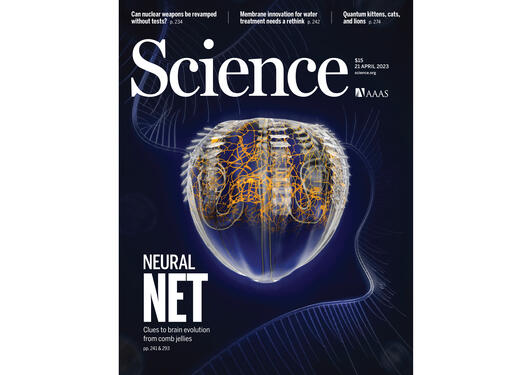Young again: study shows that comb jellies can age in reverse
For most animals, ageing is a one-way journey. In a recent PNAS publication, researchers Joan Soto-Angel and Pawel Burkhardt discovered that a species of comb jelly can reverse its life cycle, returning from adulthood to a larval stage.

Main content
Animals are born, grow, reproduce and die - usually in that order. Only a few species are able to deviate from this general principle, the most famous example being the ‘immortal jellyfish’ Turritopsis dohrnii, which can revert from adult medusa to a polyp. Research led by Michael Sars Centre alumnus and current postdoctoral fellow at the Department of Natural History and University Museum of Bergen, Joan J. Soto-Angel, adds the comb jelly Mnemiopsis leidyi to this exclusive group of age-defying organisms. “We showed that mature lobate stages of M. leidyi are able to reverse to a cydippid larval stage after a period of stress”, Soto-Angel explained. “The fact that we have found a new species that uses this peculiar “time-travel machine” raises fascinating questions about how spread this capacity is across the animal tree of life”.
Ctenophores, also called comb jellies, have long fascinated scientists with their regeneration capacities and their ability to reproduce sexually at the larval stage, blurring the lines between adulthood and immature youth. Previous experiments had concluded that the larva-to-adult transition was irreversible, but when Soto-Angel noticed that an adult ctenophore had vanished from a tank, seemingly replaced by a larva, he became curious to find out if they could be one and the same individual. Together with Michael Sars Centre group leader Pawel Burkhardt, he designed experiments to try and reproduce this potential reversion under controlled conditions.
“Witnessing how they slowly transition to a typical cydippid larva as if they were going back in time, was simply fascinating” – Joan J. Soto-Angel
When exposed to the stress of starvation and physical injury, Mnemiopsis leidyi demonstrated an extraordinary ability to shift from its adult lobate form back to a cydippid larval stage. “Witnessing how they slowly transition to a typical cydippid larva as if they were going back in time, was simply fascinating”, Soto-Angel recalled. “Over several weeks, they not only reshaped their morphological features, but also had a completely different feeding behavior, typical of a cydippid larva.”
The study broadens the known developmental flexibility of ctenophores and positions Mnemiopsis leidyi as a valuable model for future research in developmental biology and aging. Since comb jellies are among the earliest animal lineages, the findings suggest that reverse development may represent an ancient feature in the animal kingdom. “This is a very exciting time for us”, Burkhardt said. “This fascinating finding will open the door for many important discoveries. It will be interesting to reveal the molecular mechanism driving reverse development, and what happens to the animal’s nerve net during this process”.
